When we mapped out our 21-day road trip around the Czech Republic, Kutna Hora was our first stop.
The ancient silver mining town of Kutna Hora is one of the country's most popular destinations. Only an hour from Prague, it makes a great day trip and an even better destination in its own right. And it doesn't hurt that the Sedlec Ossuary bone church is right next door.
Worth it? Definitely!
One day in Kutna Hora
While it may appear to be a rather unassuming town, Kutná Hora is a favorite on the tourist radar, to a significant degree because of the famous “bone church” in the nearby village of Sedlec. Sadly, some rush in to see that one place and move on, never knowing what they might have missed.
During our visit, we discovered that the Sedlec Ossuary is not as impressive as many other nearby locations. For our part, we thought Kutná Hora’s historical town center and the Church of Saint Barbara were even more remarkable than the ossuary (which we covered in a separate article).
Anyway, Kutna Hora has a fascinating history. Watch this fun cartoon to learn all about it:
It all began in 1142, when the first Cistercian monastery in the Czech lands was established in the nearby village of Sedlec. Any peace and quiet the poor monks might have enjoyed was short lived though, because silver was discovered in the area in the 1200s. This made the king so happy that he established the royal mint there in 1300, making Kutna Hora not merely a wealthy royal city, but the second most important town in the Kingdom of Bohemia.
Thanks to all the money rolling into town, the magnificent Church of St. Barbara and the Cathedral of Our Lady at Sedlec were built not long after. Still standing, UNESCO thought these two sites were impressive enough to be awarded world heritage status.
Where to stay in Kutna Hora
We stayed at the comfortable and centrally located Hotel Opat. They are usually fully booked, though, so here are some other choices:
- $$$ – Palace Kutná Hora
- $$ – Vila U Varhanáře
- $ – Hotel Medinek Old Town
Kutna Hora excursions from Prague
Most excursions from Prague include a visit to the Bone Church (Sedlec Ossuary). They can be a good choice if you don't care about exploring the salt mines or visiting the silver museum.
This one is very popular:
Kutna Hora day trip itinerary
Before I go further, I should explain that our plane had arrived in Prague at 9:00 a.m. that morning and got a late start. The drive itself only takes an hour.
10:30 – Hrádek
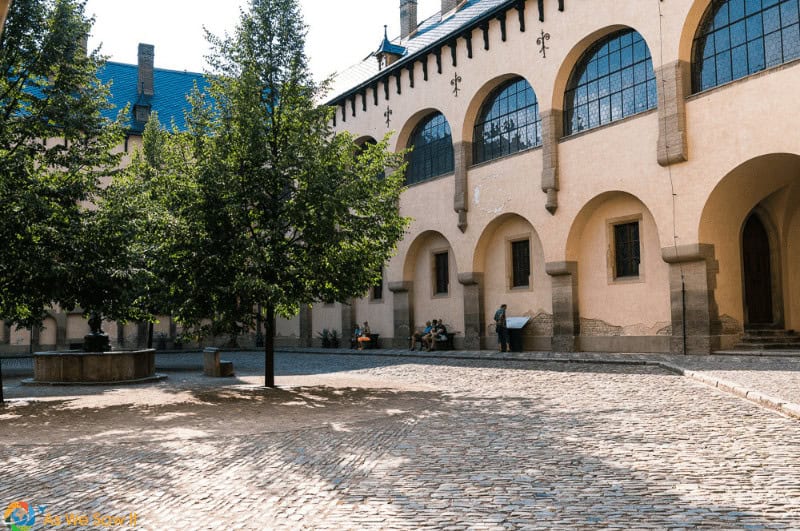
Since it all began with silver, it made sense to begin our sightseeing at the Hrádek. It's an impressive, 700-year-old building that was once a patrician residence. Thanks to the Information Center, we were able to take a private tour so we could get better photos and ask all the questions we wanted, without disturbing other people.
Hradek now houses the fascinating Czech Museum of Silver and offers two informative tours:
- Silver City – geology, archeology, development of Kutná Hora, the history of Hrádek, the life of the “silver nobility“, numismatics (1 hour)
- The Journey of Silver – medieval mine, horse gin, medieval silver ore extraction and processing technology, minting, miners' settlement (1½ hours)
We took the second tour.
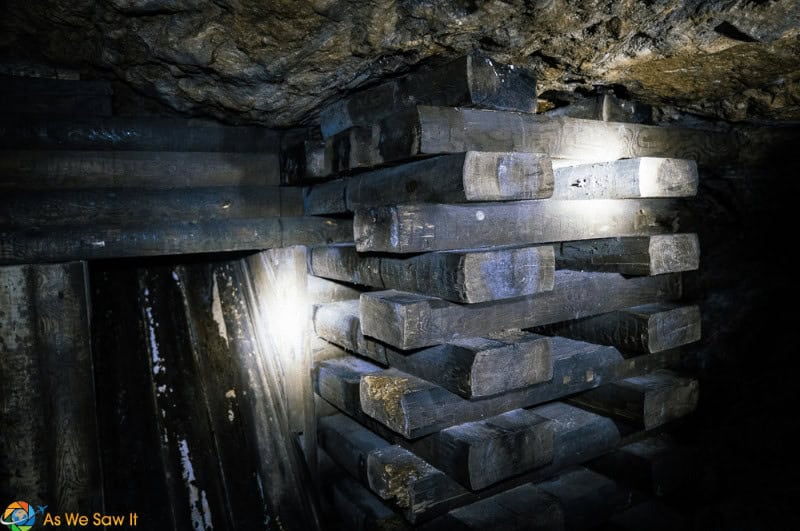
Our guide began by explaining how raw silver was mined and processed, then brought us to the original “donkey gin,” an animal-powered mining machine. After donning the required cover-up and headlamp, we descended 40 meters into the Swiss cheese-like passages under Kutna Hora.
Soon we were walking through a section of the original medieval mine, grateful for our shoes’ good traction because some of the walkway was damp and slippery.
The passage still shows scars along the walls from the miners’ hammer-and-chisel work, the pattern broken here and there with niches that once had held the miners’ candles. I shuddered at the mental image of working in such meager light underground, hoping my lamp wouldn’t go out while I completed my daily labor.
ⓘ PRO TIP: The mine is not suitable for large people, nor anyone with mobility issues or fear of enclosed or dark places. Be sure to wear good shoes.
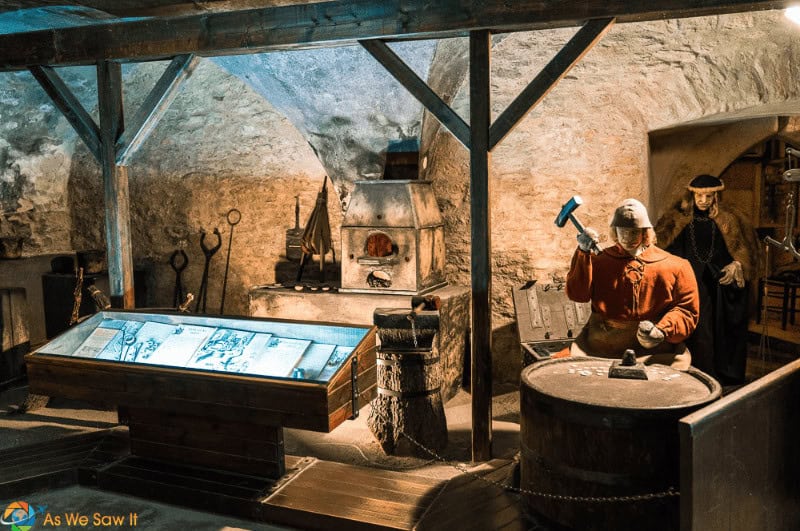
Once we returned aboveground, we were guided to the Hrádek’s colorful garden, which houses wooden structures like those that would have been in a miners' settlement. Ther's also a replica of a hearth furnace with bellows, a smelter from the era that was complete with its devices and tools, and costumed mannequins of mining workers in the midst of their labors.
12:00 – Where to eat in Kutna Hora: Restaurant Dačický
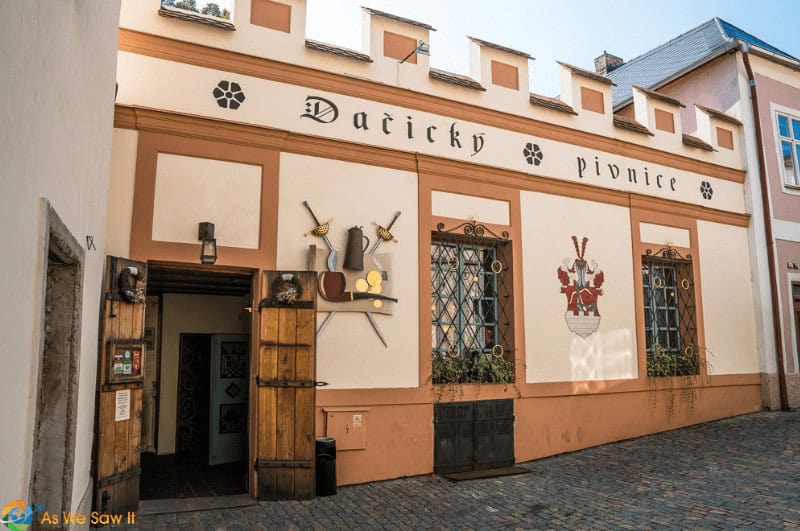
Hidden in the corner of a narrow, crooked lane, 400-year-old Restaurant Dacicky has still managed to snag the top TripAdvisor restaurant spot. And it's as much for its historic ambiance as for its delicious food.
The 700-year-old building was reconstructed in the 1500s and was the birthplace of the chronicler Mikuláš Dačický of Heslov in the mid-16th century, a legendary lover of wine, beer and women. Hence the name.
Even though this town landmark serves busloads of tourists, the restaurant was quiet when we arrived so we had our pick of where to sit. Daylight is a tried-and-true jet lag remedy so we sat on the patio … though its colorful medieval dining room and bar was far more inviting. I would imagine that the long, heavy wooden tables there have heard plenty of interesting conversations. They certainly looked old enough.
As is expected in Czech culture, we seated ourselves. Soon afterward we were savoring the restaurant’s own microbrew and looking forward to our first taste of Czech food. Yeah. Czechs never rush their cooking.
ⓘ PRO TIP: In Czech pubs, beer is served in half-liter mugs. If you’re not that thirsty, order a “malé pivo,” which is a third of a liter. It will be served in the same size mug and topped with a large head of foam.

1:30 – Italian Court

Had it not been for the Tourist Information Centre, we may never have ever heard of the Italian Court. Not by that name, at least.
When King Vaclav II implemented his monetary reform in 1300, he summoned experts from Florence to oversee it. As part of the reform, these Italian bankers created a central mint and standardized the silver coins, replacing the scattered mints around the country, as well as their various coins. The silver Prague groschen became one of Europe’s strongest currencies at the time.
The building that housed the mint was nicknamed the Italian Court, thanks to the Florentine consultants and the fact that it was a favorite residence of King Wenceslas IV. Many important royal matters were handled there, most notably the Decree of Kutná Hora.
The Italian Court is still a government building and serves as Kutna Hora’s City Hall. It also houses a museum that is one of Kutná Hora's most visited tourist sites.
3:00—Explore Kutna Hora
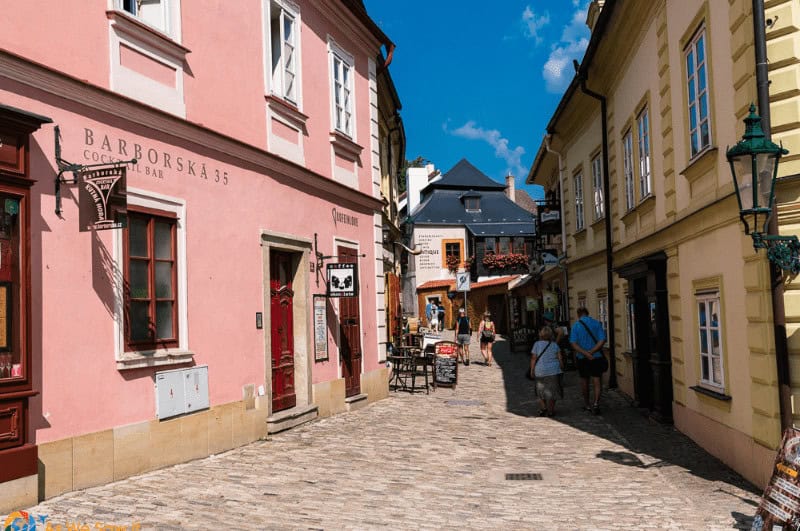
When it was time to bid goodbye, our tour guide took us back to our car by way of a few charming little cobblestone streets. Seeing the official sights is nice, but it's best not to overlook the historic town they are in.
Old Town Kutna Hora has some particularly fine private dwellings.
4:00—Sedlec Ossuary
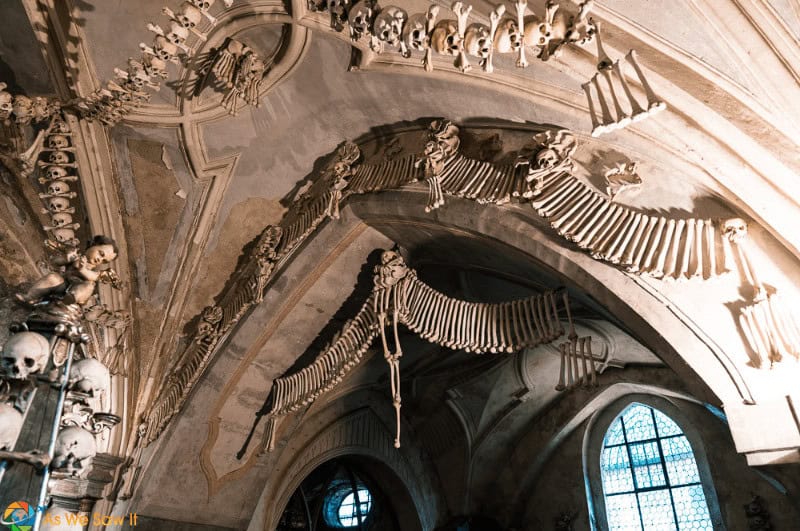
As previously mentioned, Kutna Hora’s nearby neighbor, Sedlec, is home to a sensational chapel decorated with bones. It is so popular with day-trippers from Prague and so unique in its own right that it has earned its own article. (Read about the macabre bone church here.)
4:30 – Cathedral of the Assumption of Our Lady and Saint John the Baptist
The monastery’s beautiful cathedral is part of the official UNESCO World Heritage site because “it was restored in line with early 18th-century Baroque taste and influenced the architecture of central Europe.” Built around 1300 in the shape of a Latin cross, it was the first French Gothic church on Czech lands and the largest religious building in Bohemia. Sadly, the Hussites burned the cathedral in the 1400s.
Most of the interior was redone in the early 18th century, when the Baroque style was in vogue. But its presbytery, main nave, and transept still retain their original appearance.
Visitors can borrow a helpful English-language handout and use it to tour the cathedral. Be sure to see the treasury room, which holds a masterpiece from the church’s gothic beginnings: the Monstrance of Sedlec. It is one of only ten Gothic monstrances in existence and the oldest Gothic monstrance in the world. (Monstrances are Roman Catholic ritual items.)
My biggest regret for our day in Kutna Hora is that we didn't stop to visit the cathedral in Sedlec. It completely slipped our minds. As it turns out, we could have spent 20–30 minutes there and still had time to see St. Barbara’s.
ⓘ PRO TIP: The cathedrals in Sedlec and Kutna Hora are both open from 9:00 am to 6:00 pm. The last admission to the church is 30 minutes before it closes.
4:45—St. Barbara’s Cathedral
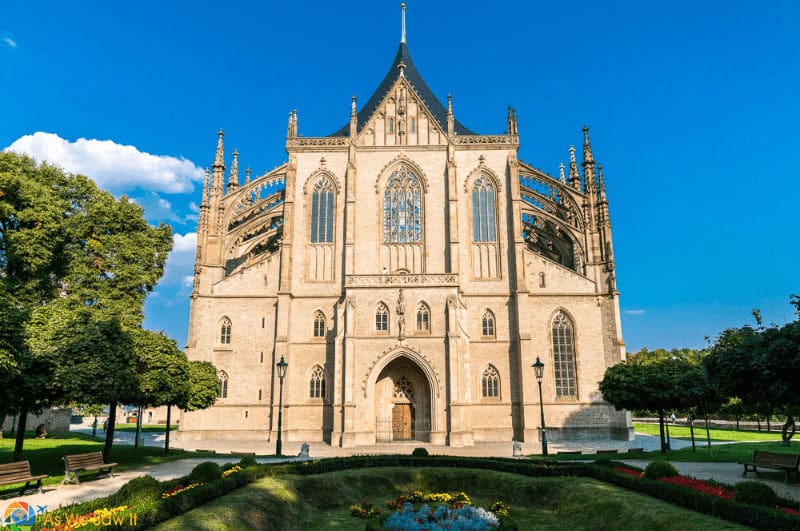
Kutna Hora rightfully deserves to be proud of the ornate St. Barbara's Cathedral. The church is dedicated to St. Barbara, the patron saint of miners, who has been credited with helping miners escape seemingly hopeless situations. On various occasions, she has opened a hard rock, lit the mine when a lamp went out, or just shown the right way out of a mine collapse.
Whether or not that's true, the church has been called a jewel of the late Gothic period by UNESCO, and it has earned World Heritage Site status along with Prague’s St. Vitus Cathedral. Curiously, although both churches were begun at roughly the same time, they are very different. Both buildings have buttresses, but St. Barbara's appears to be lighter inside and has the tented roof of Late Gothic architecture.
5:45—Gothic Stone House (Kamenny dum) & Gothic stone fountain
The completely reconstructed Gothic Stone House is covered in exquisite stone carvings. Inside are displays about the daily life of the townspeople in the medieval mining town, local church activity and more about the economic base of the town.
It is considered the most important civic house in Kutna Hora because it is a testament to how people lived and thought in its day. Unfortunately, it had already closed for the day, which just goes to prove that you really can’t see all of Kutna Hora in one day.
Well, at least we got to see the outside!
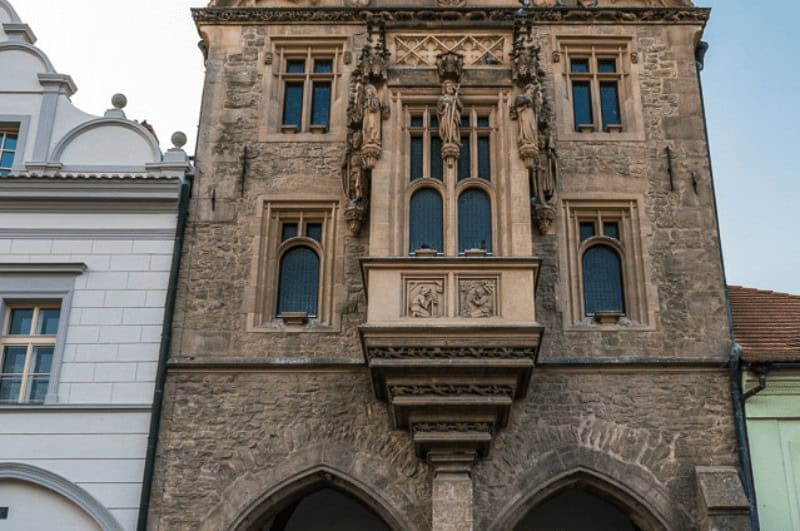
A block away, we came across a huge, 12-sided, obviously Gothic structure. Better yet, it was sharing a square with several picturesque and historic houses. Peeking through a hole in the doorway we discovered that it is now home to a number of sculptures, which look to have been created by local artists.
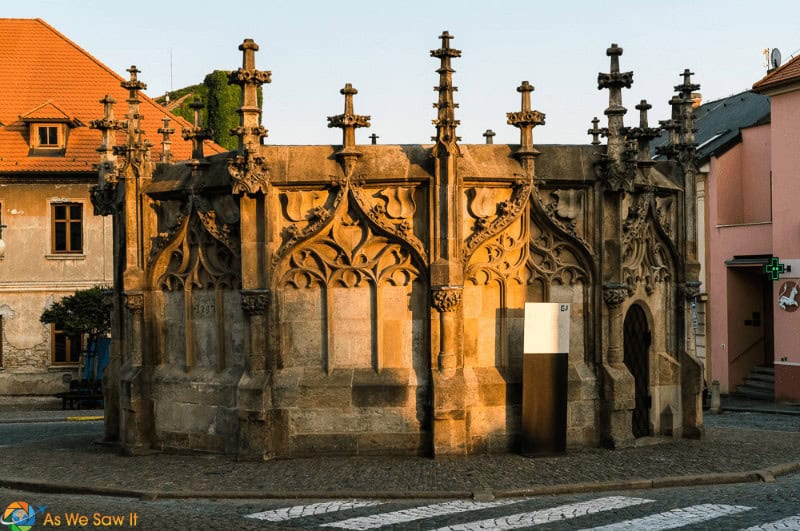
The fountain hasn't always been an art gallery, of course. During the Middle Ages, it was covered by a hexagonal roof; wooden pipes channeled water into it from a well four kilometers away. The same architect who built the Church of St. Barbara and Prague's Powder Tower also constructed it. He had designed the fountain in 1493, and it was so well-built that it continued to supply water to the town until 1890.
ⓘ PHOTO TIP: The ancient fountain is beautifully illuminated after dark.
6:00—Day's end: Dinner, wine, or time to head back
With so much to do in Kutna Hora, it might seem odd to end a day so early, but our first day in the Czech Republic had begun the day before with an overnight flight from the U.S.
After almost the entire day on our feet, we felt exhausted and ready to grab a bite at the hotel before heading to bed. Still, we couldn't resist the temptation to cap off our day at a vinoteca on our way back to our hotel to sample the local wines.

Plan your trip
- For more information about what to see around Kutna Hora, visit the official Czech Tourism website and the Kutna Hora Tourist Information Centre.
- How to get to Kutna Hora. If you don't care to take a tour, this website will help you plan a route by plane, train, bus, ferry and car.
- You can see more shots of Kutna Hora and Sedlec Ossuary in our Kutna Hora photo gallery.
ⓘ PRO TIP: Traveling with older kids can be daunting, as they often prefer to explore on their own. If you want to give them some space but track where they are, this app might be just what you need.

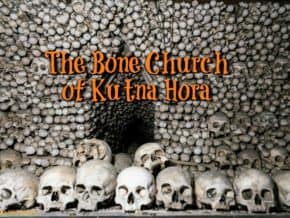
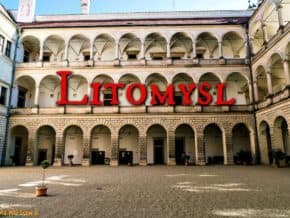
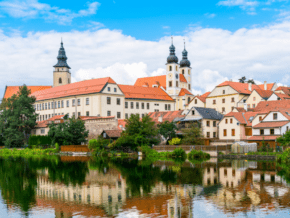
Kutna Hora looks like a lovely and charming place to visit! I’ve visited quite a few places in the Czech now but have missed this spot! I love the look of the streets, it looks very photogenic!
We probably missed some amazing parts of Czechia as well. Do you have a favorite place?
Kutna Hora is truly stunning! Thanks for sharing your experience with us, Linda!
You’re welcome, Agness.
Om my! Love this itinerary! This is another town I was not able to visit during my visit to the Czech Republic. I didn’t know about the silver past of the town.
If you ever make it to Kutna Hora, don’t miss the silver museum. It’s fascinating. We really wish we’d been able to spend more time there.